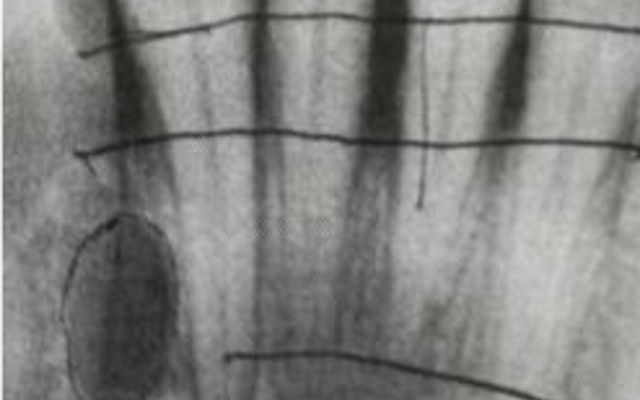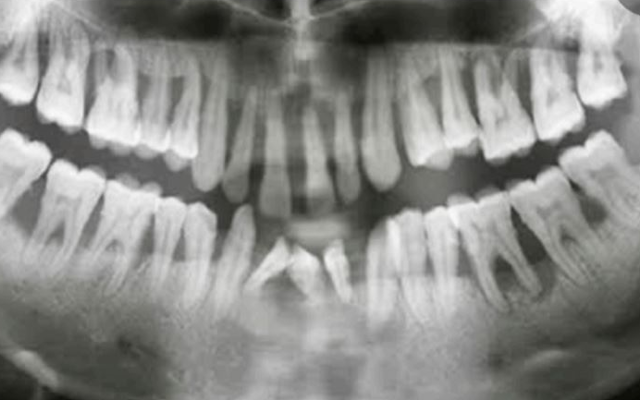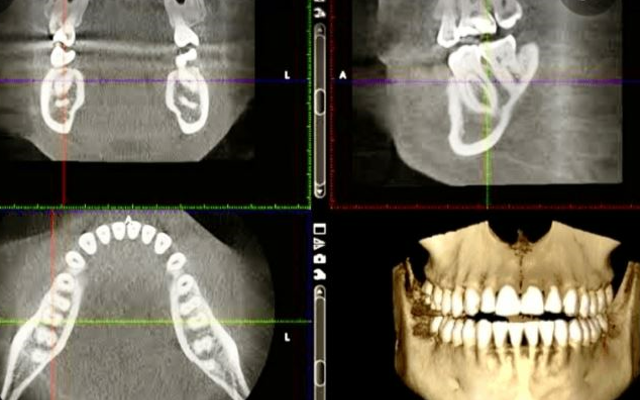Dental Radiographs
Dental Radiographs for your Periodontal and Implant Care
Dental X-Rays:
Dental radiographs (x-rays) are an essential tool in the diagnosis of your type of periodontal disease and establishing how severe it is. Dental x-rays are crucial in the planning of placement of dental implants. They also can be used to assess other dental diseases that may be present in your mouth, so that your periodontist and your dentist can work together to provide you with comprehensive dental care addressing all your dental needs. Dental radiographs are taken periodically to monitor the outcome of periodontal and implant treatments, as well as to keep a close eye on the development of other dental diseases, such as root canal problems.
Types of radiographs that you may encounter as part of your periodontal treatment include:
Intraoral X-Rays:
These are the x-rays taken with the film or sensor placed inside your mouth. They are called bitewing radiographs, which show the crowns, or periapical x-rays, which show the whole tooth (Fig 19A). Typically, a periodontist will take some periapical x-rays which provide a view of the entire tooth and the surrounding bony support. Your periodontist may need to take a full mouth survey - this is a set of 10 -14 periapical x-rays to capture your entire dentition.
Your dentist and your periodontist may also wish to take bitewing x-rays. Bitewing x-rays are the most accurate way to assess for decay between your teeth, as well as assessing the ”fit” of the filling or crown margins around the teeth. Filling margins that are breaking down can lead to plaque being trapped between the teeth.

Orthopantomogram (OPG):
The OPG will provide a view of your entire mouth, including the surrounding jawbones and a view of the sinuses and the lower part of the eye sockets (Fig 19B). It is a very useful x-ray for the assessment and monitoring of periodontal conditions. They provide a lot of information at a very low dose of radiation exposure. The OPG is not as sharp in focus as an intraoral x-ray, so intraoral x-rays may also be required. Some periodontists will take an OPG with their own machine. Others will refer you to a medical radiology clinic for the OPG.

Cone Beam Computerised Tomography (CBCT):
A Cone Beam CT provides a 3-dimensional image of the teeth, the jaw bones, and the surrounding anatomical structures (Fig 19C). The 3-D view is particularly useful for planning the placement of dental implants as it will allow your periodontist to make accurate measurements of the volume of bone available for implant placement, how close the implant placement may be to nearby anatomical structures such as floor of the sinus, the nerve canals and to adjacent teeth. Cone Beam CT can be used to map out the pattern of loss of bone around the roots of the teeth for the purpose of complex treatment planning for periodontal diseases. It is also useful when there is more than one possible cause of bone loss around the roots of teeth- for example, a fractured root may be difficult to detect without 3-D imaging. Some periodontists will take CBCT scans in house with their own machine; others will refer you to a medical radiology clinic for the CBCT scan.

What about radiation dosage?
Each of the above dental radiographic techniques will impart a very low level of exposure to radiation. The design of modern dental x-ray machines has meant that dosages are kept so low that lead aprons are now not required for routine dental radiology examinations.
- Intraoral x-rays are about the equivalent of the radiation dosage of 1 day of simply living each day (background radiation), which is about 4 microsieverts.
- An OPG is approximately 2.5 x the background daily radiation dosage (10 microsieverts).
- A Cone Beam CT dosage is more variable, depending upon the size of the scan but the average is 80 microsieverts.
For comparison, a chest CT scan is approximately 7000 microsieverts.
More information about radiation dosage radiation safety can be found at arpansa.gov.au
